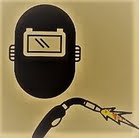Preparing for the AWS/CSWIP 3.1 certification is a crucial step in the career of a welding inspector. Whether you’re aspiring to become certified or looking to enhance your existing knowledge, our AWS/CSWIP 3.1 Preparatory Quizzes can help you assess your readiness for the examination. These quizzes are designed to test your knowledge and provide valuable insights into the subject matter, helping you excel in the certification process.
At the American Welding Society (AWS), industry professionals come together to set the standards for welding practices and certifications. The AWS/CSWIP 3.1 certification, offered in collaboration with the Certification Scheme for Welding and Inspection Personnel (CSWIP), is a globally recognized qualification for welding inspectors. Our preparatory quizzes cover a wide range of topics related to welding inspection, ensuring that you are well-prepared for the challenges ahead.
Stay tuned for more quiz questions and informative content to help you ace the AWS/CSWIP 3.1 certification. Your journey to becoming a proficient welding inspector starts here.
We have prepared some quizzes so you can check your preparations before appearing to exam





